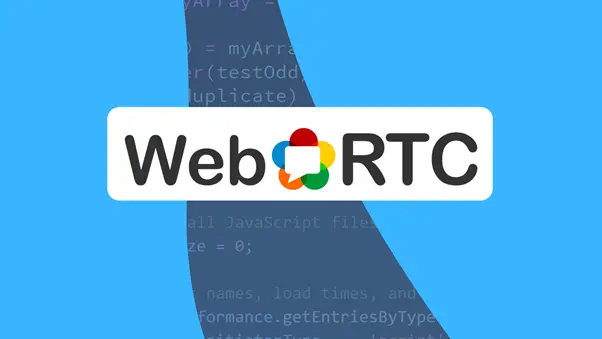WebRTC: What Do You Need to Know?

More than ever, real-time video streaming is essential. This technology is in greater demand as a result of the widespread use of video conferencing by enterprises, organizations, and people.
Since the first lockdowns caused by COVID, many regular activities and special occasions have moved online. While live streaming with a reasonable amount of delay has been successful for larger-scale events, peer-to-peer streaming with real-time or very low latency has been used for smaller events that entail audience involvement or participation.
What Exactly is WebRTC?
Real-time media connections, such as speech, video, and data transmission, are made possible between browsers and devices thanks to Web Real-Time Communication (WebRTC), an open-source initiative and protocol. Users now have the option to communicate directly from their default web browser without the usage of sophisticated plug-ins or other gear.
In May 2011, Google originally revealed the WebRTC project as a way to create a standard set of protocols for allowing high-quality RTC applications inside browsers, mobile platforms, and IoT devices. Flash and plug-ins were the only tools available at the time that offered real-time communication.
The first cross-browser video conversation between Chrome and Firefox was developed after two years and a lot of effort. Since then, as more companies add support for the standard, support for WebRTC has surged among developers. Today, WebRTC mobile app development is a commonly used technology for video calling and is natively accessible (to varying degrees) on Android, and iOS.
How Does WebRTC Operate?
Peer-to-peer conferencing relies on WebRTC for two key components. It is initially in charge of media capturing on your device. Thus, WebRTC is the system that instructs your device to begin recording. It is also in charge of sending data between the two devices.
A set of JavaScript APIs serves as the foundation for WebRTC. GetUserMedia, RTCPeerConnection, and RTCDataChannel are the three primary APIs.
By connecting to the user’s device’s camera and microphone, “getUserMedia” enables users to record audio and video. The “RTCPeerConnection” protocol makes it possible for peers’ devices to transmit audio and video. Along with managing the call’s bandwidth use, this API also controls the call’s security. Any kind of data may be sent between devices using the “RTCDataChannel” protocol.
WebRTC has an API that may be integrated into a variety of websites and software. The real-time conferencing technology may be accessed without the need for extra software or plug-ins thanks to this framework. It is incredibly important to developers only for this reason.
It’s crucial to note that WebRTC is unable to recognize signals from other devices trying to start a web conference. Once the link is built, it just makes the conferencing possible.
Who Uses WebRTC and Why
- The purpose of WebRTC is to improve the convenience of P2P internet interactions. There are several uses for WebRTC, including the following:
- Video meetings and talks are conducted via WebRTC in Zoom, Microsoft Teams, Slack, and Google Meet.
- WebRTC is used in the fields of health, security, and the internet of things. It allows professionals to consult with patients online through telehealth.
- Between browsers and security cameras, WebRTC acts as a connecting agent. This happens in security and surveillance systems for homes and businesses.
- WebRTC is used to use real-time media.
- WebRTC provides the fundamental link between professors and students in an online learning environment.

Advantages of WebRTC
- Less manual integration labor is required
- As network conditions vary, it may modify the communication quality, capacity, and traffic flow
- Supported by Google Chrome, Mozilla Firefox, and Safari
- If the browser is WebRTC compliant, it works with any operating system
- Doesn’t need any additional plugins or third-party elements
- Open-source applications
Disadvantages of WebRTC
- There is a bandwidth issue since P2P browser connections are required
- Maintenance costs may be high since WebRTC requires powerful servers
- The business security and privacy standards must be met, thus IT teams must make sure of this. Standards have yet to be established
- There are no clear-cut standards for service quality. Thus, it is feasible to maintain the quality of streaming video or audio
Conclusion
One of the most significant communication technologies of the twenty-first century is WebRTC. It applies to a wide range of businesses and application scenarios. Understanding how this works will enable you to make the most of it in your unique situation. Additionally, the WebRTC development business will assist you in utilizing the most dependable technology to accomplish your project.





